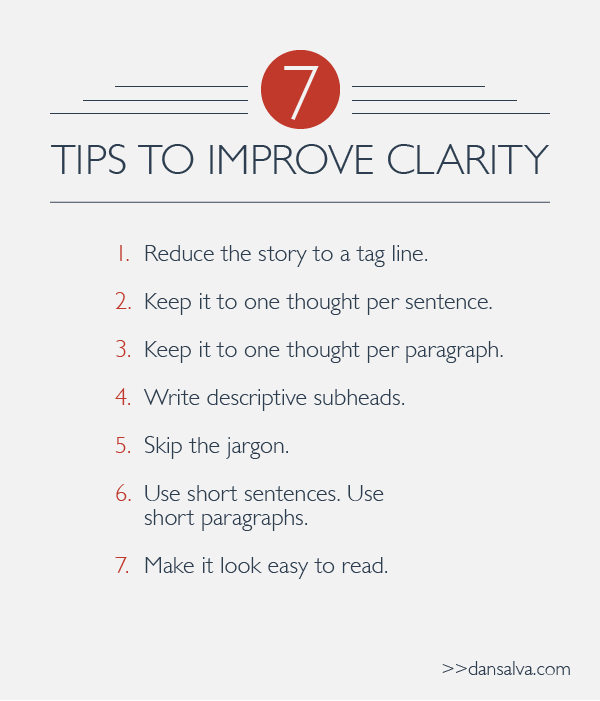Writing isn't just about putting words on a page; it's about conveying your ideas in a way that resonates with your readers. Enhancing your writing style can elevate your messaging, making it clearer and more impactful. Whether you're a student, a professional, or someone who simply enjoys writing, understanding and refining your style can make all the difference in how your audience perceives your work. Let’s dive into why writing style matters and how you can improve it!
Understanding the Importance of Writing Style

Your writing style is essentially your unique fingerprint in the world of words. It encompasses everything from your choice of vocabulary to your sentence structure and tone. So, why is writing style important? Here are a few key reasons:
- Clarity: A clear writing style helps readers grasp your ideas quickly. When your sentences are structured well and free of unnecessary jargon, your message shines through.
- Engagement: A captivating style keeps readers hooked. When your writing flows smoothly and feels alive, it invites readers to engage with your content, rather than drifting off.
- Voice: Your writing style reflects your personality and authority on the subject. It establishes a connection with the reader, making your voice distinct and memorable.
- Impact: A compelling writing style can persuade readers, evoke emotions, and provoke thought. It’s not just what you say, but how you say it that leaves a lasting impression.
In summary, honing your writing style is crucial for effective communication. The right style can transform mundane text into powerful narratives, enhancing both clarity and impact. So, how can you develop a writing style that resonates? Let's explore some practical tips and strategies in the upcoming sections!
Also Read This: Remote Airports in the USA Captured in Stunning Images
Key Elements of Clarity in Writing

When it comes to writing, clarity is king. A clear piece of writing ensures that your message is understood by the reader without confusion. Here are some key elements to consider:
- Conciseness: Use the fewest words necessary to convey your message. Avoid filler words and jargon that can muddle your writing. For instance, instead of saying “due to the fact that,” simply say “because.”
- Simple Language: Opt for straightforward vocabulary that your audience can easily understand. It’s important to remember that you’re writing to communicate, not to impress. A sentence like “The results were ambiguous” can be replaced with “The results were unclear.”
- Active Voice: Writing in an active voice makes your sentences stronger and clearer. For example, instead of saying “The ball was thrown by John,” say “John threw the ball.” This switches the focus directly onto the subject.
- Logical Structure: Organize your thoughts in a way that flows naturally. Start with an introduction, followed by the body of your argument, and finally, a conclusion that ties everything together. This helps your reader follow along effortlessly.
- Consistent Tone: Maintaining a consistent tone throughout your piece can also enhance clarity. Whether it's formal, informal, or somewhere in between, consistency helps to keep the reader engaged.
By incorporating these elements into your writing, you'll create a straightforward experience for your readers, making it easy for them to grasp the points you're trying to communicate.
Also Read This: How to Remove the Getty Images Watermark with a Step-by-Step Guide
Techniques for Improving Impact

Creating impactful writing is all about resonating with your readers and leaving a lasting impression. Here are some techniques to boost the impact of your writing:
- Vivid Imagery: Use descriptive language to paint a picture without overwhelming your readers. Phrases like “the sun dipped below the horizon” evoke a strong visual and emotional response.
- Powerful Openings: Start with a hook that grabs the reader’s attention right from the start. A thought-provoking question or an eye-opening statistic can be an effective way to pull them in.
- Engaging Anecdotes: Sharing personal stories or anecdotes can make your points more relatable and memorable. People connect with stories, so don’t hesitate to share yours!
- Varied Sentence Structure: Mix up your sentence length and structure to keep your readers on their toes. Short, punchy sentences can amplify key points, while longer ones can provide necessary details.
- Call to Action: End with a strong call to action that prompts your readers to think, feel, or do something. Whether it’s to reflect on a topic or to consider a different perspective, this helps your writing resonate even after they’ve finished reading.
By employing these techniques, your writing won’t just be read—it’ll be remembered, making a lasting impact that stays with your audience long after they’ve moved on.
Also Read This: Find and Download the Best Memes Ever Using This Method
Common Pitfalls to Avoid

When striving to enhance your writing style, it’s crucial to be aware of common pitfalls that can undermine your efforts. Here are some of the key traps to watch out for:
- Wordiness: Being concise is essential. Avoid using excessive jargon or unnecessarily complex language. Aim for brevity and clarity.
- Passive Voice: While passive voice has its place, overusing it can make your writing less engaging. Strive for an active voice to create a stronger connection with your readers.
- Lack of Structure: A well-organized piece is vital for clarity. Ensure your writing has a clear introduction, body, and conclusion so that your thoughts flow seamlessly.
- Overusing Adjectives and Adverbs: While descriptors can enhance your writing, relying too heavily on them may dilute your message. Use them sparingly and where they have the most impact.
- Ignoring Your Audience: Tailoring your writing to your audience is key. Avoid using references, slang, or styles that may alienate or confuse your readers.
- Neglecting Revision: First drafts are rarely perfect. Failing to revise can lead to overlooked errors that detract from your writing’s clarity and effectiveness.
Being aware of these pitfalls will help you navigate the writing landscape more effectively and enhance the overall quality of your work.
Also Read This: How Imago Images Infuses Life and Energy into Event Photography
Practical Tips for Enhancing Your Writing
Improving your writing style isn’t just about avoiding pitfalls; it’s also about actively implementing strategies that can boost clarity and impact. Here are some practical tips you can easily incorporate into your routine:
- Read Regularly: The more you read, the more you’ll understand different writing styles. It can inspire you and help you discover what resonates with you.
- Write Daily: Practice makes perfect. Set aside time each day to write, whether it’s journaling, blogging, or working on a story. Consistency builds skill.
- Use Outlines: Before diving into writing, create an outline. It will help you organize your thoughts and ensure a logical flow.
- Seek Feedback: Sharing your work with others can provide invaluable insights. Constructive feedback is crucial for growth.
- Revise Ruthlessly: Don’t hesitate to cut unnecessary words or sections. Aim for clarity and cohesion in your revisions.
- Expand Your Vocabulary: A rich vocabulary can enhance your writing. However, avoid using complex words purely for show. Each word should serve a purpose.
If you incorporate these tips into your writing routine, you'll find that your style becomes clearer and more compelling, allowing your message to shine through more effectively.
Enhance Your Writing Style for Clarity and Impact
Writing is an essential skill that transcends various fields and professions. Whether you’re crafting a report, an article, or a blog post, enhancing your writing style can significantly improve the clarity and impact of your message. Below are some strategies to elevate your writing.
1. Know Your Audience
Understanding who your audience is allows you to tailor your writing. Consider their interests, knowledge level, and preferences. This helps in choosing the right tone and complexity of language.
2. Be Concise
Clarity often comes from brevity. Aim to express your ideas in as few words as possible without losing their essence. Here are some tips:
- Eliminate unnecessary words.
- Avoid jargon unless it is common knowledge to your audience.
- Use active voice whenever possible.
3. Structure Your Writing
A well-structured piece helps readers follow your argument or narrative:
| Structure Component | Description |
|---|---|
| Introduction | Introduce the topic and exhibit the purpose. |
| Body | Elaborate on your points with supporting evidence. |
| Conclusion | Summarize key takeaways and reiterate the importance. |
4. Use Examples and Analogies
Illustrating your points with relevant examples or analogies can make complex ideas more relatable and easier to understand. This technique reinforces your message while engaging your reader.
5. Edit Ruthlessly
The first draft is just that—a draft. Spend time revising and editing your work. Look for:
- Spelling and grammatical errors.
- Clarity and coherence of ideas.
- Unnecessary repetitions.
In conclusion, enhancing your writing style requires a focused approach to clarity and impact. By knowing your audience, being concise, structuring your work effectively, using engaging examples, and editing diligently, you can create powerful written content that resonates with your readers.
 admin
admin








